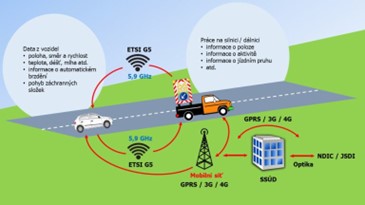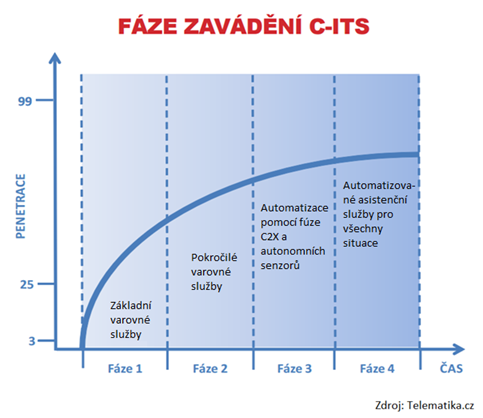Types of C-ITS systems
Cooperative ITS enable direct communication between vehicle unit (OBU, On-Board Unit) and unit located in another vehicle or equipment deployed on road infrastructure (RSU, Road Side Unit). The information is transmitted via dedicated short range communication, which operates at 5.9 GHz frequency band (this bandwidth is designated for safety applications worldwide) and/or via data networks of mobile operators.

C-ITS are divided into types according to way of communication (data exchange):
- vehicle – vehicle (V2V)
- vehicle – infrastructure (V2I)
- infrastructure – vehicle (I2V)
- infrastructure – infrastructure (I2I)
V2V concept – V2V communication is used for transmission of information between individual vehicles. Each vehicle is both a transmitter and a receiver and whenever it receives a relevant message, it immediately distributes this message to all vehicles in range. The V2V communication includes traffic jam ahead warning, slow vehicle warning (e.g. maintenance vehicles), stationary vehicle warning (e.g. due to technical malfunction) as well as emergency vehicle approaching warning and many more.
V2I and I2V concept – V2I/I2V communication is used mainly for hazardous location notification, road works warning or weather conditions warning such as black ice on the road. This type of communication can also be used for transmission of information directly to On-Board Unit to display current variable traffic sings, traffic lights and so on.
I2I concept – I2I type of communication is used especially for transmission of information (described above) between individual communication nodes in order to transmit them to vehicles within I2V.
